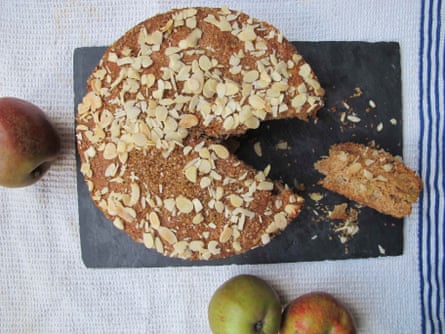Feminists hate men. It’s such a common accusation thrown at women whether they identify as feminists or not, whenever or wherever they say or write anything vaguely critical of a man or men.
Do I hate men? I’m married to one and after decades together he remains my delight in life so clearly if I do hate men then #not all men.
The accusation is normally followed by a whole series of replies denying that women hate men, yet given the way the world works, given the reality of women’s oppression, male privilege and men’s enforcement of both of those conditions, it is entirely reasonable for every women to have moments where she resents or hates men.
But if we are to clearly separate the individual man for the group of “men” the dominant and privileged half of the population, then it is equally reasonable for every man to have their own moments when he resents or hates men.
Hmm. Given the reality of our lived experience, it is hardly surprising that every man should have moments, when he resents or even hates other men.
Why men hate other men? It’s a much easier question to ask than why women hate anyone. Men are allowed to have active unpleasant feelings and attitudes.
Looking back at that ridiculous “women love men, because..” site, some of the reasons are blindingly obvious.
Men are unsafe
Any man who has a woman he loves in his life, be it a mother, a partner, a daughter etc. must hate the men that make his loved one feel unsafe.
Men kill women in large numbers, often in intimate settings. They rape women. They assault women, physically, emotionally and verbally. My daughter is not safe walking home because of “men”. Our lives are curtailed and made smaller by men.
Her father hates the men that threaten his daughter.
But more than disliking, resenting or hating men’s attitudes to the women in their lives, it is also true to say that men make other men feel unsafe.
Men kill each other in large numbers. They assault other men, physically, emotionally and verbally. Being a young man walking home is not safe, because of other men.
And because of the way the world is structured, men aren’t even allowed to easily admit or discuss the fact that they feel unsafe and afraid. Such fears are often described as unmanly, rather than the entirely rational reaction to the threat of serious damage.
Men are violent. They make the world unsafe for everyone, man or woman.
Men try to make other men feel manly and “masculine”. They define other men using quite narrow characteristics instead of letting men define themselves.
What it means to be a man, the required characteristics and attributes is heavily policed within society. There are some small variations around the world, but the definition is actually pretty consistent and rigid.
Too often being a man is defined in terms that negate and denigrate being a woman or feminine, but even setting that aside, the acceptable ways of being a man are very limiting.
When asked what society values about men in a Pew Research survey, two out of the top three characteristics, financial success and leadership are external characteristics related primarily to the workplace. They are also things that are significantly easier to achieve if you start out privileged and wealthy.
These are attributes that most men will not actually be able to achieve, except in comparison with less privileged and less wealthy groups and by making these two attributes key features for how men self-identify, it gives all men an incentive to maintain the current power hierarchy. All else being equal, no matter how bad his situation, a man will be better off than the woman in his life, better off than the people he knows from underprivileged ethnic and other social backgrounds.
Too often, men’s attempts to make themselves feel “manly” manifest in behaviour designed to demean or denigrate a woman, to make her feel or appear less powerful, to reduce her autonomy and independence.
These attempts manifest in an often violent rejection of behaviour and characteristics in other men that are identified as feminine. If you are a man who values nurturing his children, who wants to stay home and care for his mother, his child, his partner, then you lose status in most societies.
Men define each other into very small limited patterns of behaviour that limit other mens’ choices and make personal success and happiness very difficult to achieve.
#not all men
Men make bad boyfriends, husbands, fathers or grandfathers.
There are many ways to build a family and many roles within that family that can be the responsibility of either or neither gender. Ultimately successful relationships are built on mutual trust and cooperation with a huge dose of good communication.
Good families require empathy, caring and nurturing.
Empathy, caring and nurturing are characteristics and skills that require practice to develop, yet most men have very little opportunity to practice these skills and are often punished for showing these characteristics when young to “toughen” them up. The Pew research poll suggested few people believed empathy, caring or nurturing were important characteristics for men.
Human beings are intensely social creatures. We crave intimacy, physical and emotional. Yet men define each other into roles that require other men to stand outside of that intimacy, to police the perimeter of the family and that is a very cold and lonely place to live.
There is a reason that the highest cause of death for men aged 18-55 is suicide.
Men cut themselves and other men off from the intimacy with other people, men or women, that we all crave and need to be healthy.
#not all men
Men insist on providing financially for a woman as if that were the only, or even the most important job, except when they don’t.
Because men are closely defined by their financial success, their ability or lack thereof to provide for their partner and family is over-stressed and over-valued. It becomes too significant and other measures of support are consequently undervalued.
If a man learns to value himself primarily by external factors such as his financial success, then he is always going to fail: someone is always more successful.
Plus beyond a certain maintenance level, women will be looking for something more than finance. Families need emotional support and commitment. Financial success is just not enough.
The lack of value placed on emotional connection and empathy means that in the event of divorce, men often just walk away. After divorce, men often fail to adequately provide financially for their own kids, as well as absenting themselves from their lives physically and emotionally.
Men define male success in a narrow competitive way that makes failure inevitable.
#not all men
Men are purpose driven.
Because being a man is defined very narrowly and on terms that are almost entirely dependant upon external competition with other men, and in opposition to any characteristic perceived to be female, then much of a man’s life becomes caught up in doing “stuff” and being successful. At the same time, men punish each other for any characteristic perceived to be non-masculine, including but not limited to emotional intimacy or nurturing.
Men learn to do “stuff” to avoid intimacy. They use the stuff they do, whether it’s work achievements or obsessive hobbies, to avoid engaging emotionally or intellectually with other people. They compete rather than cooperate.
Nobody actually died wishing they’d spent more time in the office. Post-retirement, no one in that office will care what you have done. They won’t even remember your name.
Men are too concerned with status and prestige to actually focus on enjoying their everyday lives. They are too distracted by external validation to actually value intimate relationships appropriately.
Men define success in a way that makes emotional intimacy very difficult.
#not all men
Men insist women find them funny, even when they’re not.
As Atwood wrote, men worry about women laughing at them whilst women worry about men killing them.
If many women don’t have a sense of humour it’s because most men are just not funny. Honestly, the jokes are not very good, and no one really finds the threat of rape and violence that we live with very humorous except people who think it’s okay to rape or be violent. Don’t be that man.
Men are discouraged from questioning their role or responsibilities. They are encouraged to view the status quo as normal and natural, even whilst it works to restrict them, to force them down into a very small and painful box. It makes anyone or anything that does challenge the stars quo very difficult for them to deal with.
When a woman challenges a man’s view of himself and his role in life, it can feel like an existential or fundamental threat. The acceptable defined masculine role is so limited and so fundamentally unsatisfying, and painful to live, that almost anything and everything can be perceived as a threat or challenge to a man’s masculinity.
Men react violently to threats, even imagined ones.
#not all men
Men cope with the limitations placed upon them by making women pay the price.
We should each get to decide, within the limits society imposes upon us, our relative wealth, health etc. for ourselves what we value and what gives our lives purpose.
Men demand time and attention from the women in their lives. They require the women in their lives to put them first, to look after them, physically, intellectually and emotionally. Because they themselves are unable or unwilling to put in the emotional work, women are left to do all of the heavy lifting. It’s tiring. It leaves no time for women to actually live their own lives and make sure their own needs are met.
Men need so much attention from the women in their lives that the women don’t get any time for themselves. The personal cost for women is just too damned high.
Men put each other into really small boxes. They cut off huge parts of their personalities in order to fit into those tiny limited roles. They force each other into an insane competition with each other which means almost every man fails at some stage in their life, creating huge damage to each other.
Men expect women to pick up the emotional pieces.
#not all men
Men are not dependable
Given the number of single-mother families in the world men have never been dependable, never been reliable for the women in their lives, and families.
Men run away, emotionally and physically too often to be regarded as dependable.
The rules that make a few men powerful, make the rest brittle and fragile.
#not all men
Men have brought us to this point as a human race.
Men have been in charge for a long time, and let’s face it, it’s not looking like an overwhelming success. There are some obvious problems with the world, and men manage to both refuse to take responsibility for their fuck-ups and refuse to share any power or responsibility for making things better.
For every step forwards, there is a clear an obvious step back. My daughter’s life is not so different to my own.
Our privilege protects us from some men, #not all men.


















